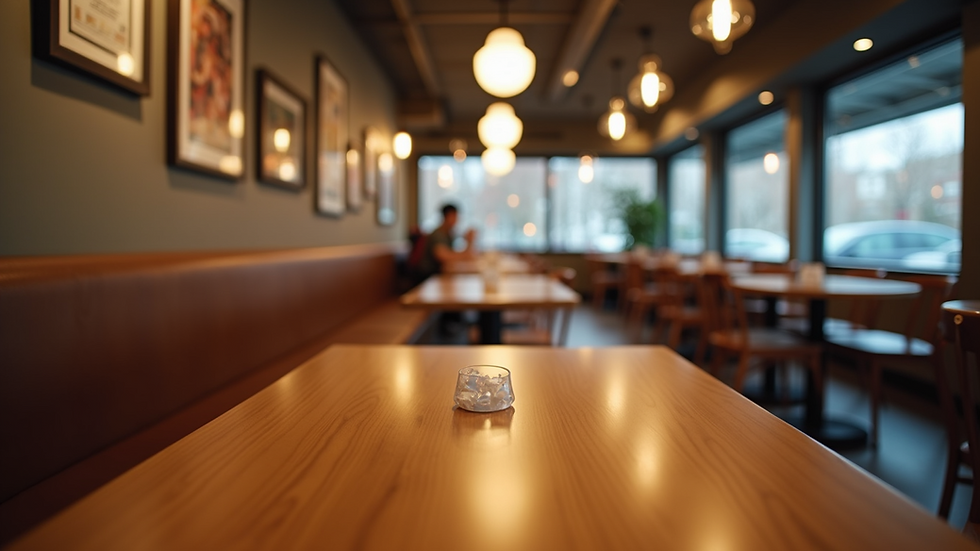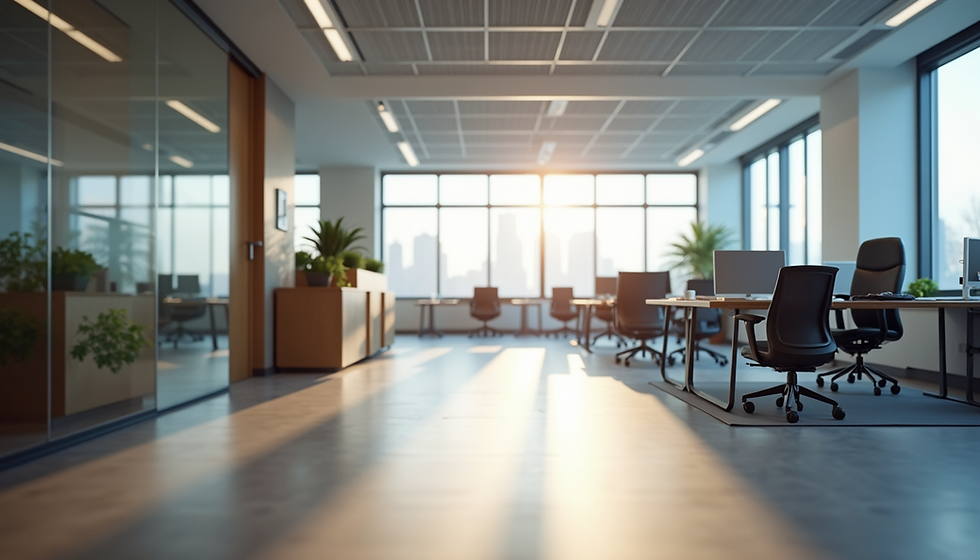Expert Strategies for Restaurant Interior Design
- Phoebe Lam Studio
- Nov 8
- 4 min read
Updated: Nov 9
Creating an inviting and functional restaurant interior is essential for attracting customers and enhancing their dining experience. Restaurant design goes far beyond mere aesthetics; it directly influences customer comfort, staff efficiency, and the business's overall success. In this post, we share strategies for restaurant interior design that can help transform your vision for any dining space into a memorable environment.
Key Restaurant Interior Tips for a Successful Design
When planning a restaurant interior, several factors must be considered to ensure the space is both appealing and practical. Here are some essential tips:
Understand Your Brand and Concept
The interior design should reflect its brand identity and concept. Whether it’s a casual diner, a fine dining establishment, or a themed café, the design elements must align with the overall vision. For instance, a seafood restaurant might incorporate nautical colors and textures, while a modern bistro could focus on sleek lines and minimalist décor.
Optimize Layout for Flow and Comfort
The overall layout affects how both customers and staff move through the space. An efficient flow minimizes wait times and improves service quality. Consider the arrangement of tables, the kitchen, and service stations. Overcrowded tables impact the comfort and privacy of your guests. For instance, seating near the service station or next to the restroom vestibule may lead to discomfort, as customers may feel uneasy due to the noise from the service area and foot traffic.
Choose Appropriate Lighting
Lighting plays a significant role in setting the mood and affects the presentation of food. Utilize a combination of ambient, task, and accent lighting. Using dimmer switches allows flexibility during different times of day and for special events. Whenever possible, make use of natural light, but control it to prevent glare by using window shades. Adding accent lighting, such as table lamps or candles, can enhance the ambiance and help create a specific mood.
Select Durable and Comfortable Furniture
Furniture must withstand heavy use and be comfortable for guests. Materials like hardwood, metal, and high-quality upholstery are good choices. Chairs with supportive backs and tables at the appropriate height enhance the dining experience.
Incorporate Acoustics
Managing noise levels can contribute to customer satisfaction. Use sound-absorbing materials such as acoustic panels, curtains, or carpets to reduce echo and background noise. This will help create a more intimate and enjoyable atmosphere. Visit our blog on Acoustic for more information.

Practical Restaurant Interior Tips for Enhancing Ambiance and Functionality
To elevate a restaurant’s interior design beyond the basics, consider the following specific strategies :
Use Color Psychology
Colors have the power to influence mood and appetite. Warm colors like red, orange, and yellow can stimulate the feelings of hunger and energy, while cool colors such as blue and green promote calmness. Choose a color palette that complements your cuisine and aligns with your brand personality.
Incorporate Greenery and Natural Elements
Adding plants and natural materials can breathe life into a space and improve air quality. Consider using potted plants, vertical gardens, wooden accents, or decorated planters. These features create a welcoming and fresh environment.
Personalize with Art and Decor
Unique artwork and decorative items can tell a story and create a memorable dining experience. Incorporating local art or themed decorations adds character and fosters community engagement.
Plan for Flexibility
Design your spaces to accommodate various group sizes and events. Incorporating features such as movable partitions, stackable chairs, and modular furniture will enable easy reconfiguration. Utilizing tables of different sizes and freestanding chairs provides the flexibility needed to host various types of gatherings.
Focus on Accessibility
Ensure your design complies with accessibility standards. Wide aisles, ramps, and accessible restrooms make your restaurant welcoming to all guests.

Collaborate with Professionals
Engaging with experts can streamline the design process. For instance, working with restaurant design services helps ensure that your vision is executed with precision and adherence to industry best practices.
Material Selection and Sustainability in Restaurant Design
Choosing the right materials significantly affects durability, maintenance, and environmental impact. Sustainable design is becoming increasingly important in the hospitality industry.
Durable and Easy-to-Clean Surfaces
Restaurants need materials that can withstand spills, stains, and heavy use. Practical choices include quartz countertops, sealed concrete floors, and vinyl upholstery.
Eco-Friendly Options
Incorporate recycled, renewable, or low-VOC materials into your designs. Options like bamboo flooring, reclaimed wood, and natural fiber textiles reduce environmental impact.
Energy Efficiency
Select energy-saving lighting, appliances, and HVAC systems. An efficient design not only lowers operating costs but also supports sustainability goals.
Waste Reduction
Plan for effective waste management by including designated recycling and composting areas. This encourages green initiatives and can appeal to eco-conscious customers.

Final Thoughts on Creating a Successful Restaurant Interior
Designing a restaurant interior requires a balance of creativity, functionality, and strategic planning. By focusing on aligning with your brand, ensuring customer comfort, and promoting operational efficiency, you can create a space that not only attracts but also retains patrons. Pay careful attention to elements such as lighting, acoustics, and material choices. Collaborating with professional restaurant design services can offer valuable insights and help ensure your project meets its full potential.
Investing time and resources into thoughtful interior design ultimately pays off in customer satisfaction and business success. What steps will you take to transform your restaurant space today?
All content on this post is protected by copyright and may not be used or reproduced without permission


Comments